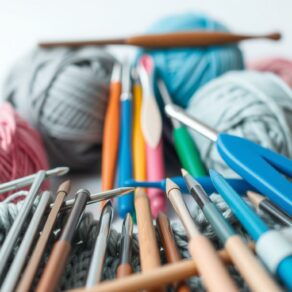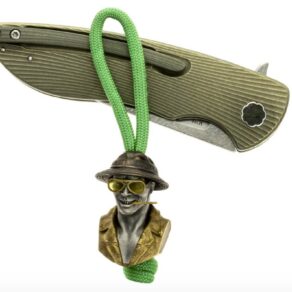In everyday carry setups, small components often serve key roles. Handcrafted paracord beads, whether added to a knife lanyard or integrated into a bracelet, are more than decoration. They provide mechanical benefits, improve handling, and contribute to overall functionality. And when crafted with care, high-quality beads offer precise dimensions, reliable weight distribution, and a better feel during use. They add comfort, grip, and sometimes even.
Function Over Form: What Paracord Beads Actually Do
Beads are often used to improve grip and control. A well-placed bead at the end of a knife lanyard helps with quick retrieval — especially useful when wearing gloves. The added mass shifts the center of balance, making tools easier to grab from pockets or sheaths.
Beads also lock loops in place or allow for smooth tension adjustment in sliding knots. Their role in survival gear and bushcraft setups is practical — bead shape and size affect cord tension, grip friction, and how easily loops can be tightened or loosened.
Key Build Features: What Makes Noblie Beads Stand Out
Handcrafted beads from Noblie are made from solid metals with close attention to machining tolerances and finish quality. Unlike cast or molded pieces, these are CNC-milled, lathe-turned, or hand-shaped from raw material stock such as:
- Grade 5 Titanium (Ti-6Al-4V): Density ~4.5 g/cm³. Ultimate tensile strength ~950 MPa. Strong, corrosion-resistant, non-magnetic, and very durable. Used in military and aerospace-grade gear.
- Phosphor Bronze (CuSn8): Density ~8.8 g/cm³. Offers higher weight, distinct coloration, and oxidizes naturally for a lived-in look. Common in traditional or vintage-style builds.
- Sterling Silver (.925): Known for clean casting, mirror-like polish, and added heft. Commonly used in limited-edition or collector-grade projects.
Some beads combine materials — like silver sleeves over a bronze core or anodized titanium with silver detailing. These hybrid builds offer both strength and contrast in design.
Most beads are drilled with internal diameters between 4.5mm and 6.0mm, suitable for standard 550 paracord. For multi-strand cords or decorative weaves, bore sizes up to 7mm may be necessary. Always check internal clearance, especially for full-core (non-gutted) applications.
Weight and Balance: Getting It Right
Bead weight matters. Sub-10g beads may not provide enough counterweight for a balanced feel. Over 30g, and you risk awkward swing dynamics, especially when clipped to smaller tools or folding knives.
Noblie’s bead designs generally fall in the 12g–25g range. This weight range provides enough pull to stabilize the lanyard while staying compact. It also helps during tool handling — the added mass at the end of the cord gives your fingers something to latch onto.
Finish the Setup: Choosing the Right Style and Placement
Beads are usually the visual anchor of any paracord accessory. They say something about the user’s taste and intent. A machined titanium skull pairs well with modern tactical gear. A sculpted lion head in bronze adds character to a fixed-blade hiking setup. Shiny silver works well on premium folders or collection-grade knives.
Pairing tips:
- Blackwashed titanium matches stonewashed steel and anodized clips.
- Bronze or brass pairs well with wood, leather, and traditional tool finishes.
- Polished silver is ideal for display knives or refined urban kits.
These beads don’t just fit — they finish the project.
Gear Fitment: Technical Matching Advice
Not every bead fits every cord. Key factors to match include:
- Hole diameter: 4–7mm is the usual range. Gutted cords work with smaller bores; full paracord or multi-strand cords need more room.
- Bead geometry: Round beads are smoother in bracelets; cylindrical or barrel shapes grip better for loops and lanyards.
- Edge finish: Inner burrs can damage cords. Look for chamfered or polished holes.
- Surface texture: Knurling or engraved patterns increase friction — a benefit for wet or gloved hands.
Also check bead compatibility with belt clips, karabiners, and zipper pulls. Misfitting beads can cause wear, noise, or unwanted movement.
Pro-Grade Crafting Tips
Experienced users go beyond basic weaves. Builds like trilobite or king cobra weaves require larger bores or longer beads. For symmetry, some lanyards use a center bead flanked by two spacers, or twin matching end caps.
Advanced users may even modify hollow-core beads to carry items like ferro rods or signal capsules. While Noblie beads are solid-core, they integrate well with such mods as the outer visual element or structural endpoint.
Summary: Don’t Skip the Final Detail
You’ve picked the right blade. You’ve chosen the perfect weave and color scheme. Why add a low-quality bead as the final touch?
With Noblie, each bead is made with accurate tolerances, premium metals, and strong visual design. Whether it’s a working lanyard or a showpiece, the right bead improves grip, adds weight where needed, and finishes your EDC setup the right way.
When details matter, this is the one that pulls it all together.





Leave a Comment